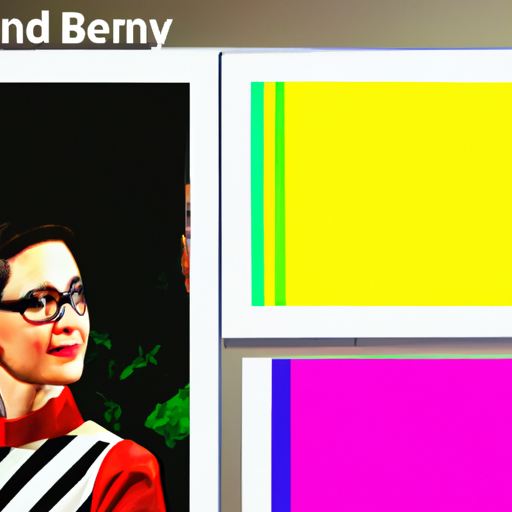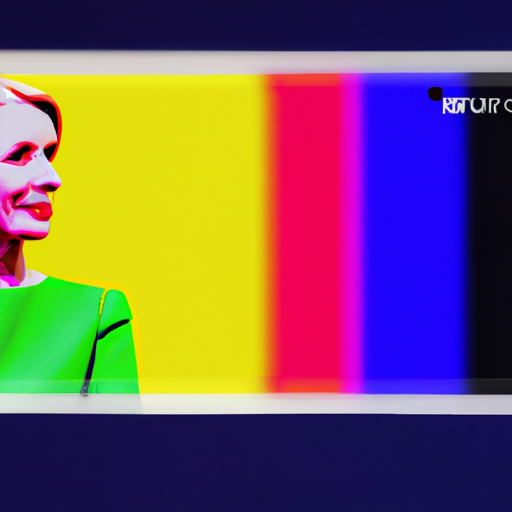
-
Table of Contents
Beyond the Frame: Interactive Art in Web Design

Web design has come a long way since the early days of static HTML pages. With the advancement of technology and the increasing demand for engaging user experiences, designers have started to explore new ways to push the boundaries of traditional web design. One such approach that has gained popularity in recent years is interactive art in web design. By incorporating interactive elements into their designs, designers can create immersive and captivating experiences that go beyond the static frame of a webpage.
The Rise of Interactive Art in Web Design
Interactive art in web design has gained traction as a result of several factors. Firstly, the widespread availability of high-speed internet and powerful devices has made it possible to deliver rich and interactive content to users. This has opened up new possibilities for designers to experiment with interactive elements and push the boundaries of what is possible in web design.
Secondly, the increasing demand for engaging user experiences has led designers to explore new ways to captivate and retain users’ attention. Interactive art provides a unique opportunity to create memorable experiences that leave a lasting impression on users. By incorporating interactive elements, designers can create a sense of playfulness and interactivity that traditional static designs cannot achieve.
Lastly, the advancements in web technologies, such as HTML5, CSS3, and JavaScript, have made it easier for designers to implement interactive elements in their designs. These technologies provide a wide range of tools and frameworks that simplify the process of creating interactive art in web design.
Examples of Interactive Art in Web Design
There are numerous examples of interactive art in web design that showcase the creative possibilities of this approach. One such example is the website for the Museum of Mario, an online museum dedicated to the iconic video game character. The website features an interactive timeline that allows users to explore the history of Mario through a visually engaging and interactive interface. Users can click on different points on the timeline to reveal information and images related to that specific period in Mario’s history.
Another example is the website for the Google Arts & Culture project, which aims to make art accessible to everyone. The website features a variety of interactive art experiences, such as virtual tours of famous museums, interactive exhibits, and even the ability to create your own artwork using digital tools. These interactive elements not only provide an engaging user experience but also educate and inspire users about art and culture.
Case Studies: The Impact of Interactive Art in Web Design
Several case studies have demonstrated the positive impact of interactive art in web design. One such case study is the redesign of the website for the Museum of Modern Art (MoMA) in New York. The museum wanted to create a digital experience that reflected the innovative and interactive nature of their physical exhibits. By incorporating interactive elements, such as virtual tours, interactive exhibits, and immersive storytelling, the museum was able to increase user engagement and attract a wider audience. The redesigned website saw a significant increase in website traffic and user interaction, leading to a boost in museum attendance.
Another case study is the website for the National Geographic Society. The society wanted to create an immersive and interactive experience that would engage users and educate them about the natural world. By incorporating interactive elements, such as interactive maps, quizzes, and multimedia content, the website was able to provide a unique and engaging user experience. The redesigned website saw a significant increase in user engagement, with users spending more time exploring the interactive content and sharing it with others.
The Benefits of Interactive Art in Web Design
There are several benefits to incorporating interactive art in web design:
- Engaging User Experience: Interactive art creates a sense of playfulness and interactivity that captivates users and keeps them engaged.
- Memorable Experiences: Interactive art leaves a lasting impression on users, making them more likely to remember and revisit the website.
- Increased User Interaction: Interactive elements encourage users to explore and interact with the content, leading to increased user interaction and longer website visits.
- Improved Education and Communication: Interactive art can be used to educate and communicate complex information in a visually engaging and interactive manner.
- Boost in Brand Perception: Incorporating interactive art in web design can enhance a brand’s perception by showcasing innovation and creativity.
Conclusion
Interactive art in web design offers a unique and engaging way to captivate users and create memorable experiences. With the advancements in technology and the increasing demand for engaging user experiences, interactive art has become an essential tool for designers to push the boundaries of traditional web design. By incorporating interactive elements, designers can create immersive and captivating experiences that go beyond the static frame of a webpage. The examples and case studies discussed in this article demonstrate the positive impact of interactive art in web design, from increased user engagement to improved brand perception. As technology continues to evolve, we can expect to see even more innovative and creative uses of interactive art in web design.
